Excerpts from Jim Conrad's
Naturalist Newsletter
from the May 5, 2013 Newsletter issued from the Frio Canyon Nature Education Center in northern Uvalde County, southwestern Texas, on the southern border of the Edwards Plateau; elevation ~1750m (~5750 ft); N29.62°, W99.86°; USA
ROCKLETTUCE
Despite the drought, one wildflower fairly commonly appearing in open, rocky and grassy areas on our hills' lower slopes and even along roads is a modest little perennial with leaves mostly arising from the base, but with white, yellow-eyed, dandelion-like flower heads on slender stems rising about a foot above the ground. One is shown below:
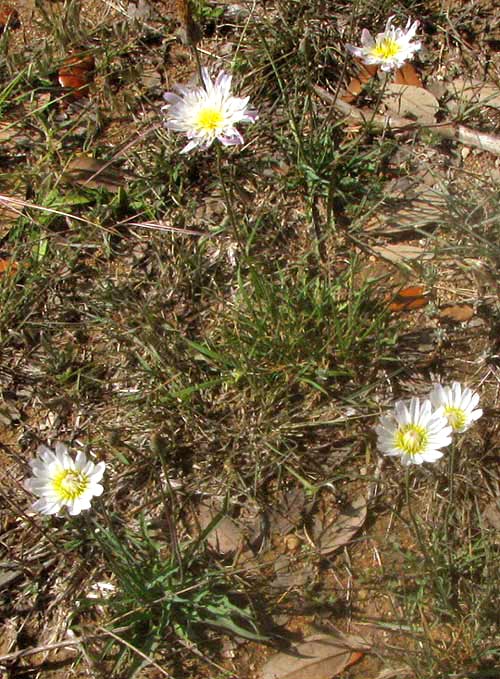
Below you can see how the stiff stems shoot from lobed leaves at the base:
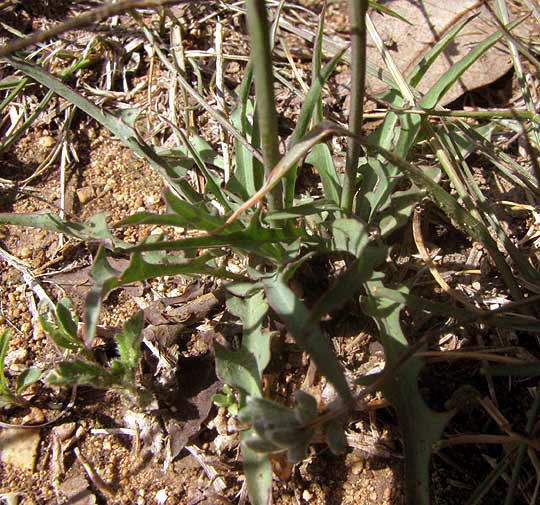
This is a member of that big group, or tribe, of Daisy or Composite Family members in which the flower heads bear only ray flowers with flat, shaped corollas -- no disc flowers with cylindrical corollas in the center. Besides dandelions, others in this group with only ray flowers include lettuce, chicory and our beloved sow thistles.
A close-up of a flower head showing that the white ray corollas are yellow at their bases is shown below:
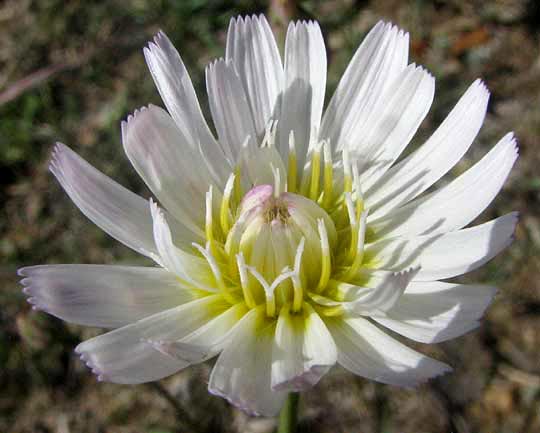
The flower heads' individual ray flowers don't look unusual but when you look beneath a head at the overlapping, scale-like bracts, or phyllaries, forming the greenish involucre, the phyllaries turn out to be fairly unusual -- good field marks, as shown below:

They are broad and few with margins so thin or "scarious" that they're like cellophane. Even more distinctive is how the phyllaries end in sharp, dark brown tips turning purple lower down, before becoming greenish.
This plant produces fruiting heads very similar to Dandelion "puffballs," except that they're smaller and the fuzz is brownish or tan color. Below you can see a part of its fruiting head in which long, slender, cypsela-type fruits are topped with wind-catching fuzz parachutes:
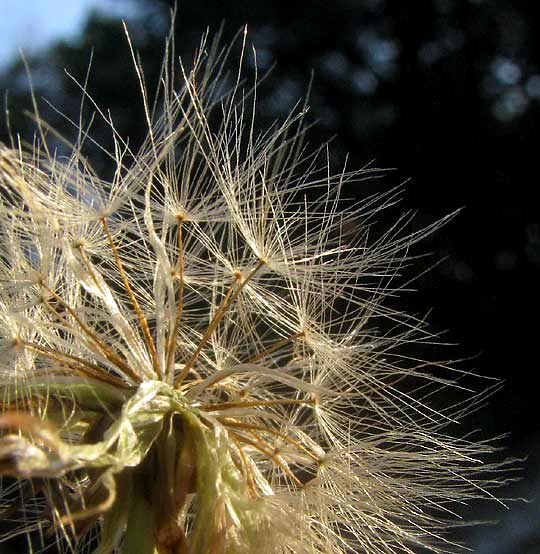
This wildflower goes by the names of White Dandelion and Rocklettuce. It's PINAROPAPPUS ROSEUS, a genus I'd never heard of before coming here. It specializes in living in open limestone areas, roadsides, on cliffs and in open, grassy flats -- exactly as we see it here -- and is distributed from southern Arizona to Oklahoma, south through Texas and well into central Mexico's arid zones.
In Mexico, according to the online Biblioteca Digital de la Medicina Tradicional Mexicana, the Nahua people of Tlaxcala State -- who call the plant Chipuli -- traditionally daub the white latex that oozes from the plant's broken stem or leaves onto aching teeth. Also, mothers who want to break their babies from nursing smear the bitter latex on their nipples.
entry dated March 26, 2022, issued from near Tequisquiapan, elevation about 1,900m (6200 ft), Querétaro state, MÉXICO
A ROSY BLOSSOMED ROCKLETTUCE
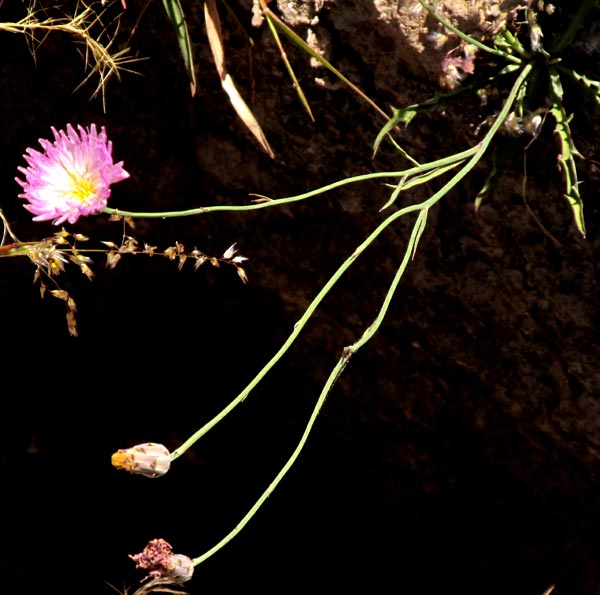
Now during the latter part of the dry season the landscape could hardly be more sunburned, dusty, dry-crispy and gray-brown. However, years ago someone out in the cow/goat/sheep-raveged scrub zone someone dug a square pit, maybe as some kind of future cellar, then never got around to finishing the job. Over the years the pit has served as a small, moisture-conserving habitat with its shadowy walls supporting plants unseen outside the pit. The above Rocklettuce is one of them. However, you can see that unlike the blossoms of Rocklettuce we admired in Texas, these are rosy colored.
R. McVaugh's 1972 paper on the genus Pinaropappus recognized four varieties of our Pinaropappus roseus. The authoritative 1997 treatment of Rocklettuce in the Flora del Bajío refers to plants in Querétaro as belonging to the variety roseus.
Of course roseus means "rosy," and the Flora del Bajío describes the flowers of Rocklettuce in our area as pink-purple, rose, to almost white, while the Flora of North America describes flower color of plants of the hot, arid, south-central US as pale pink at the tips, white to yellow at the bases.
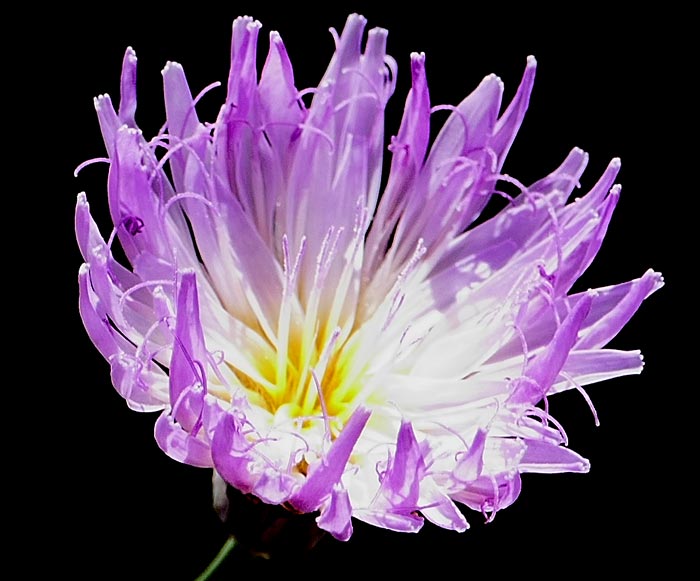
In Mexico Rocklettuce is called Espule, Chipule, and variations on those names. Traditionally, along with the medicinal uses mentioned above, a decoction of the whole plant has been used to bathe babies with skin rashes, also for measles. For constipation the plant has been crushed and applied as a poultice to the abdomen and hip.